Featured Brands
Recommended Products
Get free shipping, on most items, with your $50 purchase today! Same day shipping on most orders if placed by 3pm PST.
PLEASE NOTE:
This offer is only available to physical shipping addresses in the 48 continental United States (no PO Boxes), and some exclusions apply.
Oversize Charges
Some large and/or heavy items are subject to additional oversize charges that are separate from standard shipping costs.
Bike Build Process
All bikes are built, tested, tuned, and ready to ride upon shipment. The bike build process typically takes 2-3 days to complete depending on the bike model and the complexity of the build.
Stock Status
Orders for in-stock items placed by 3PM PST usually ship on the same day. Orders that include special-order or backordered items may be subject to shipping delays depending on product availability. Refer to estimated delivery times in cart when selecting shipping options.

Our Gear Advisors are Ready to Help.
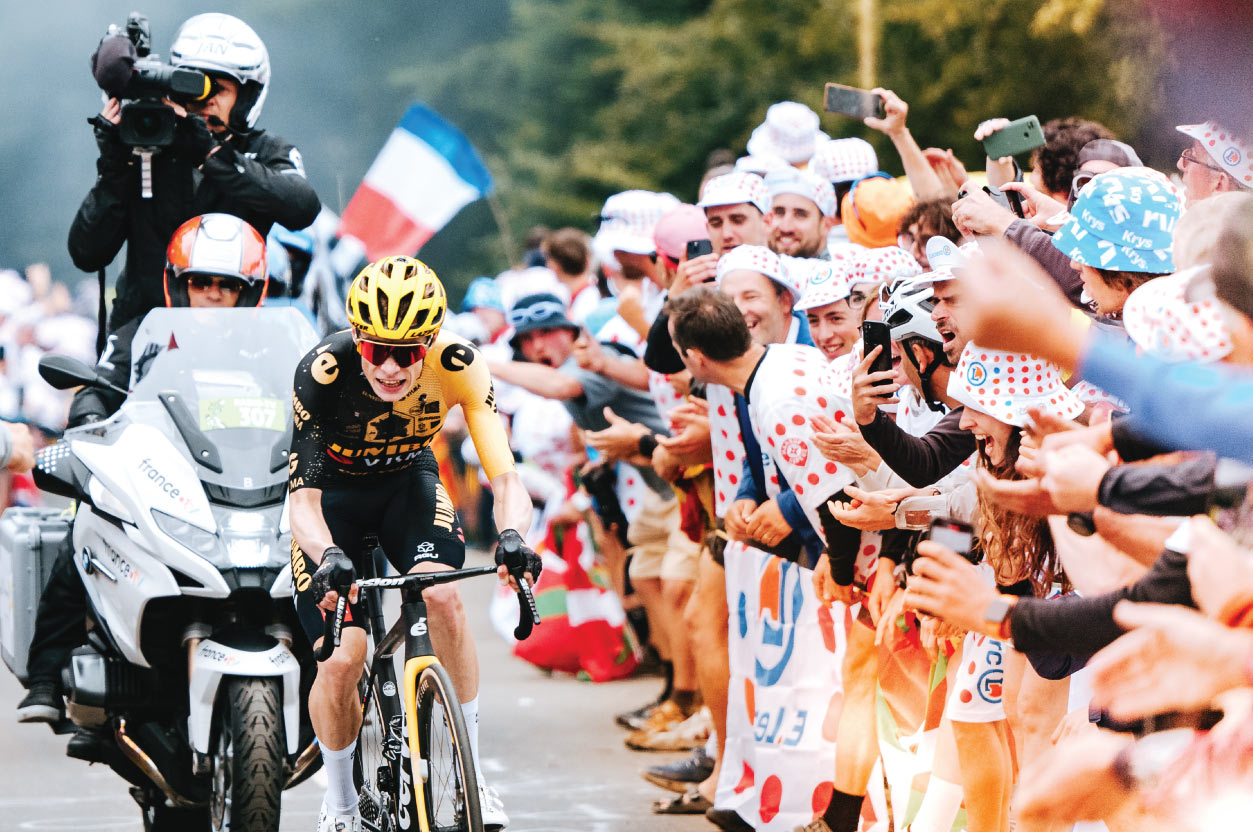
The Tour de France; it’s the pinnacle of competitive cycling and the most renowned bike race on the planet. Known by cyclists and non-cyclists alike, The Tour is the highlight of the yearly road race calendar, packed with awe-inspiring climbs, jaw-dropping descents, and electrifying sprint finishes, all set against the backdrop of the French Alps and some of the most breathtaking scenery in Europe. Put simply, there’s something special about the Tour de France. One of the longest-running bike races in the world, this Grand Tour is a 2,000+ mile, 21-day race that captures the collective attention of the cycling world every July.
That said, following the Tour de France can be daunting to the uninitiated. With four different colored jerseys to be won, epic climbing stages, and full-gas time-trial stages, all over three weeks of racing, there is a lot to learn about the biggest stop on the World Tour calendar.
The Tour de France is a stage race. This means that every day of the Tour de France is its own race (or “stage”), with a designated start and finish and, of course, a stage winner. After the final stage of The Tour, the rider with the lowest accumulated time through all the stages takes the win of the General Classification (or “GC”) and is the overall winner of the Tour de France.
Most World Tour stage races range between 3 and 8 days in length, but the Tour de France is unique, covering a whopping three weeks with very few rest days. Over those three weeks, nearly 2,200 miles (3500+ km) are covered by the racers.
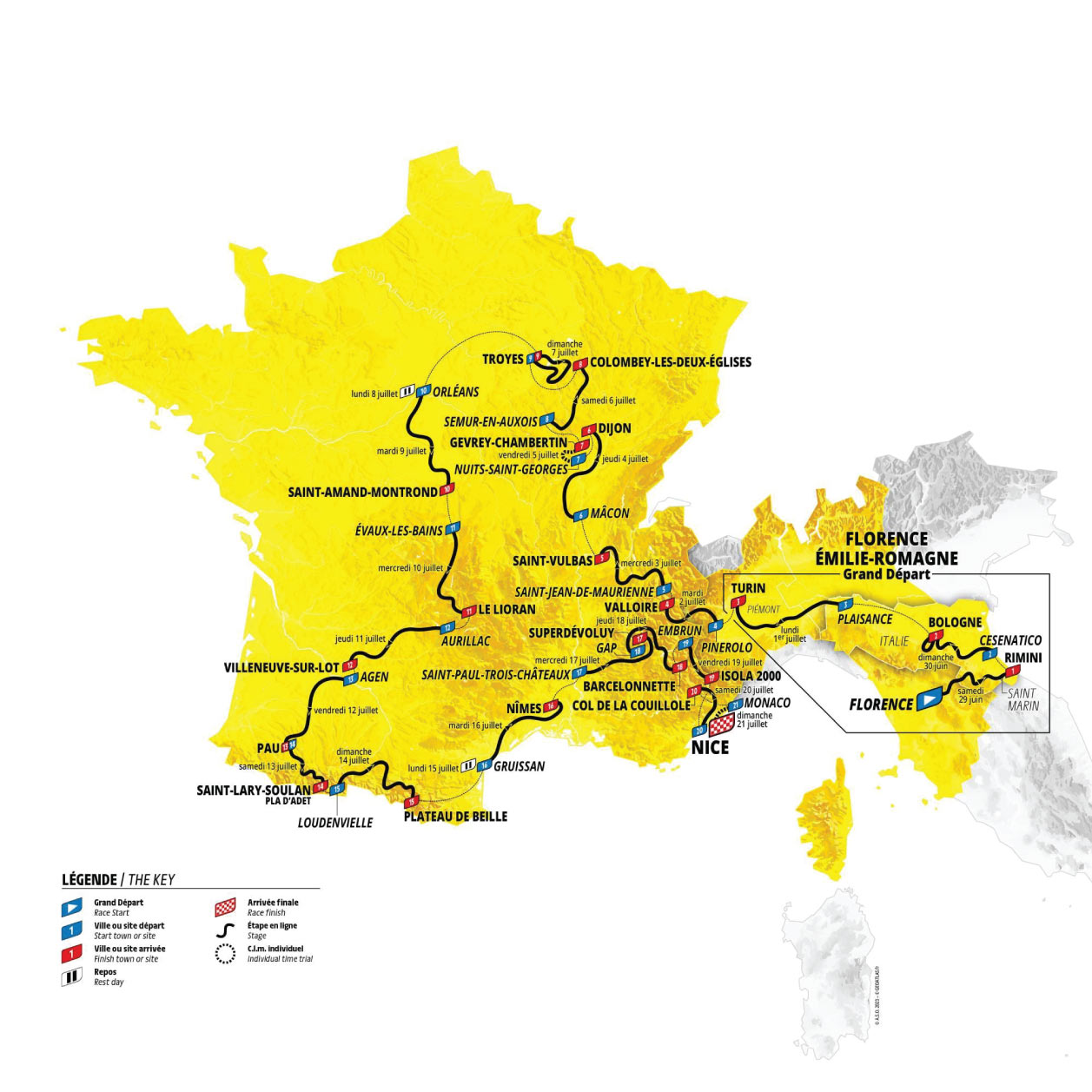
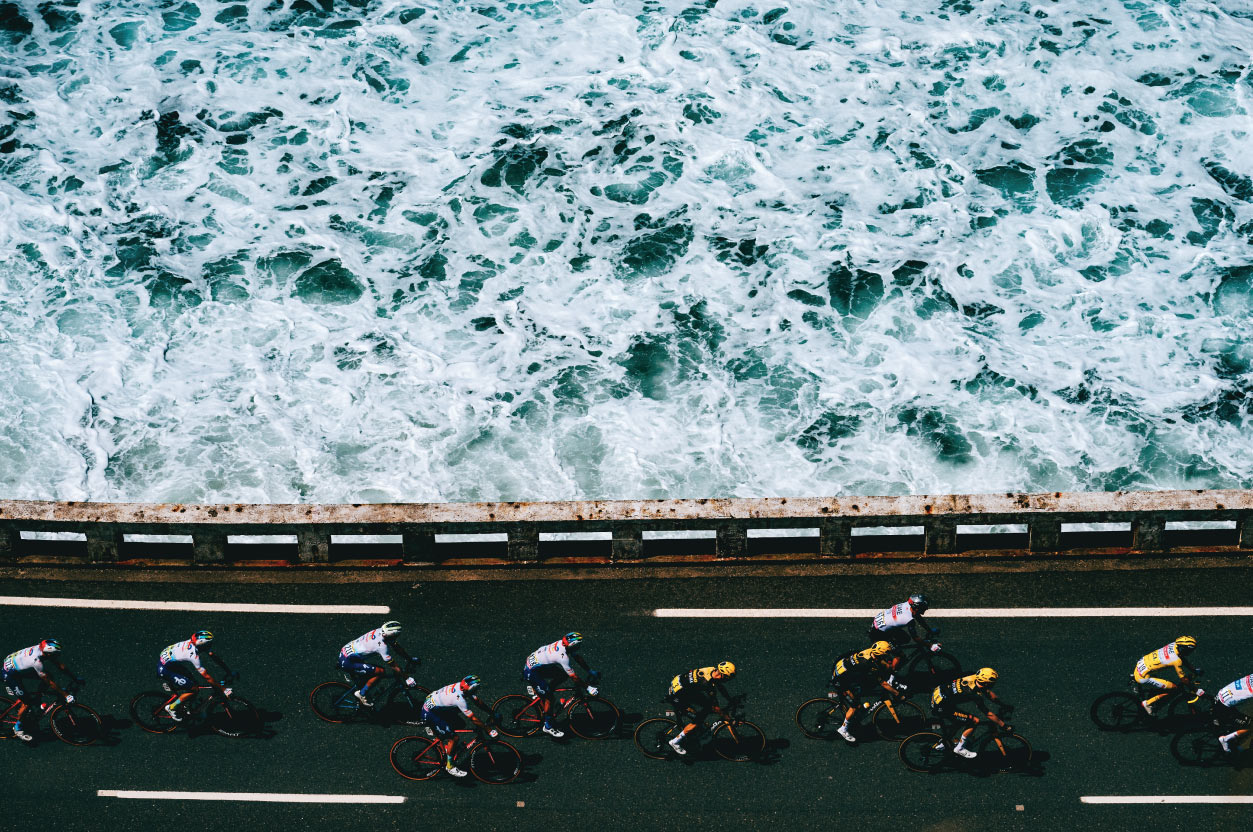
Flat stages typically are the time for entire teams to get involved in the stage, often staying together in a large group (“peloton”), with breakaway groups using race tactics, trying to separate themselves from the field. These stages also commonly offer the sprint specialists with an opportunity to flex their legs. Flat stages can deal with intense headwinds or cross-winds, and the large group dynamic can occasionally result in dramatic crashes.
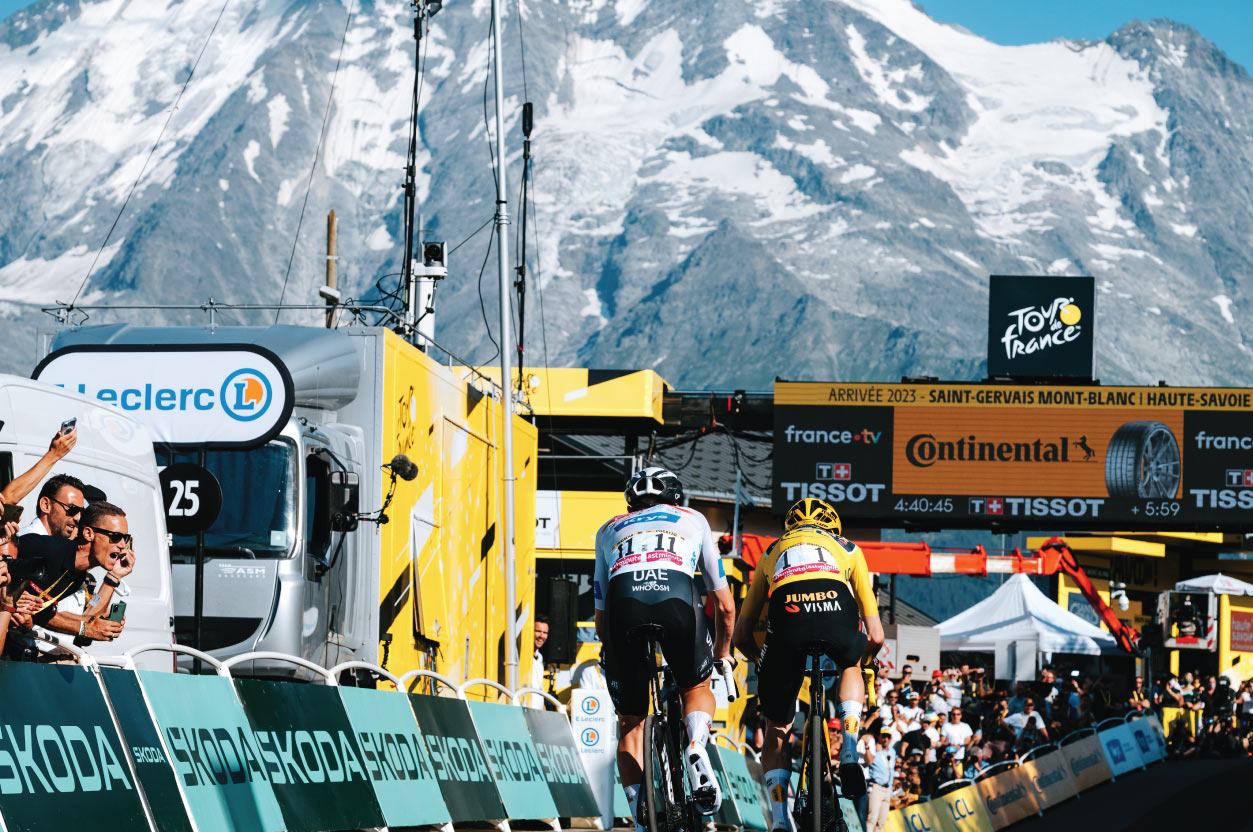
As the name suggests, hilly stages traverse rolling hills. While the stage may not reach the high elevations of the Alps, these repetitive short steep hills can rack up the vertical elevation gain and take a toll on the riders. Depending on how close the final hill is to the finish, these types of stages are often concluded in a “solo victory,” which is when the first rider crosses the finish line seconds or even minutes ahead of the second-place rider. It is also not too uncommon for hilly stages to finish in a bunch sprint.
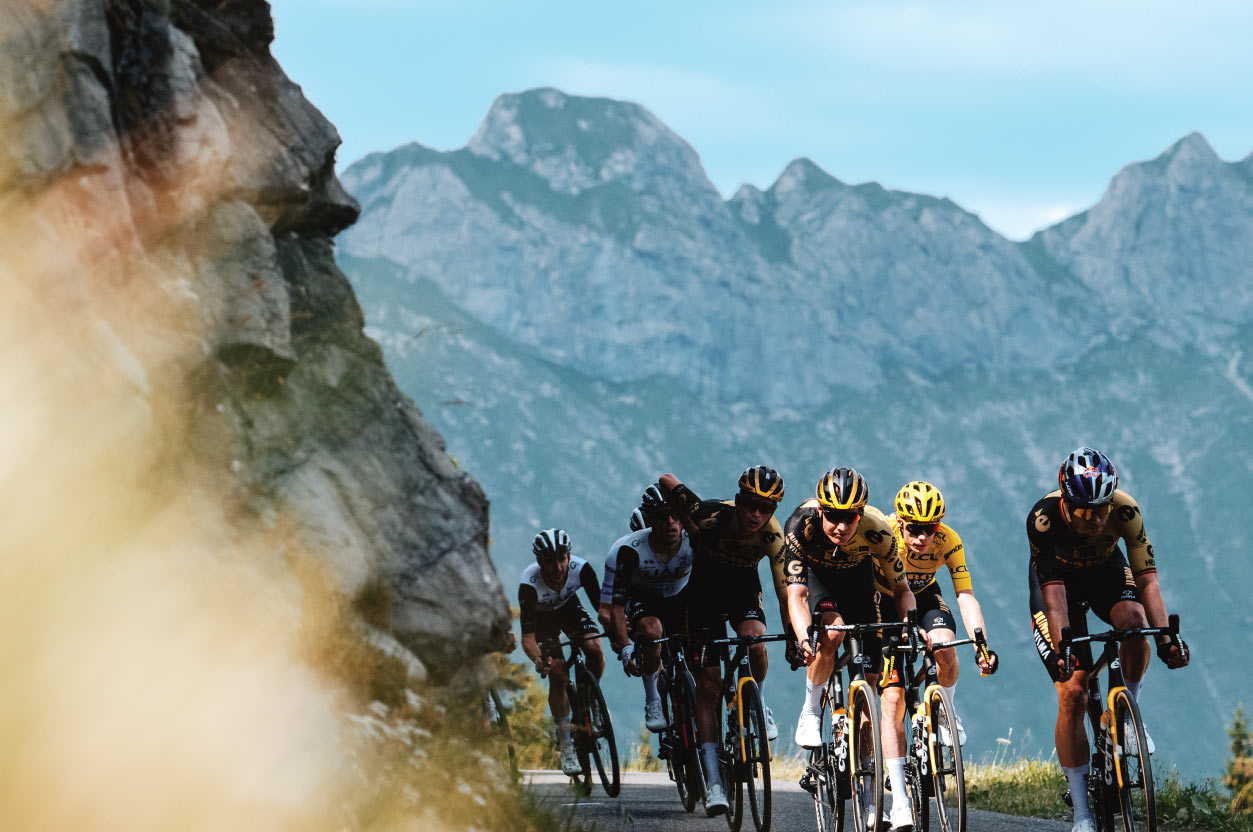
Mountain stages are where the tour is often won or lost. These stages best suit the smaller, lighter riders who excel at the art of the longest climbs. While some mountain stages might feature a flat finish, many of the most dramatic stages feature an alpine finish, with the finishing line located in the thin air of the mountains above the treeline. To exceed in these mountain stages, riders must also have exceptional bike handling skills, as these stages often require descending narrow alpine roads at over 60 mph (96+ kph).
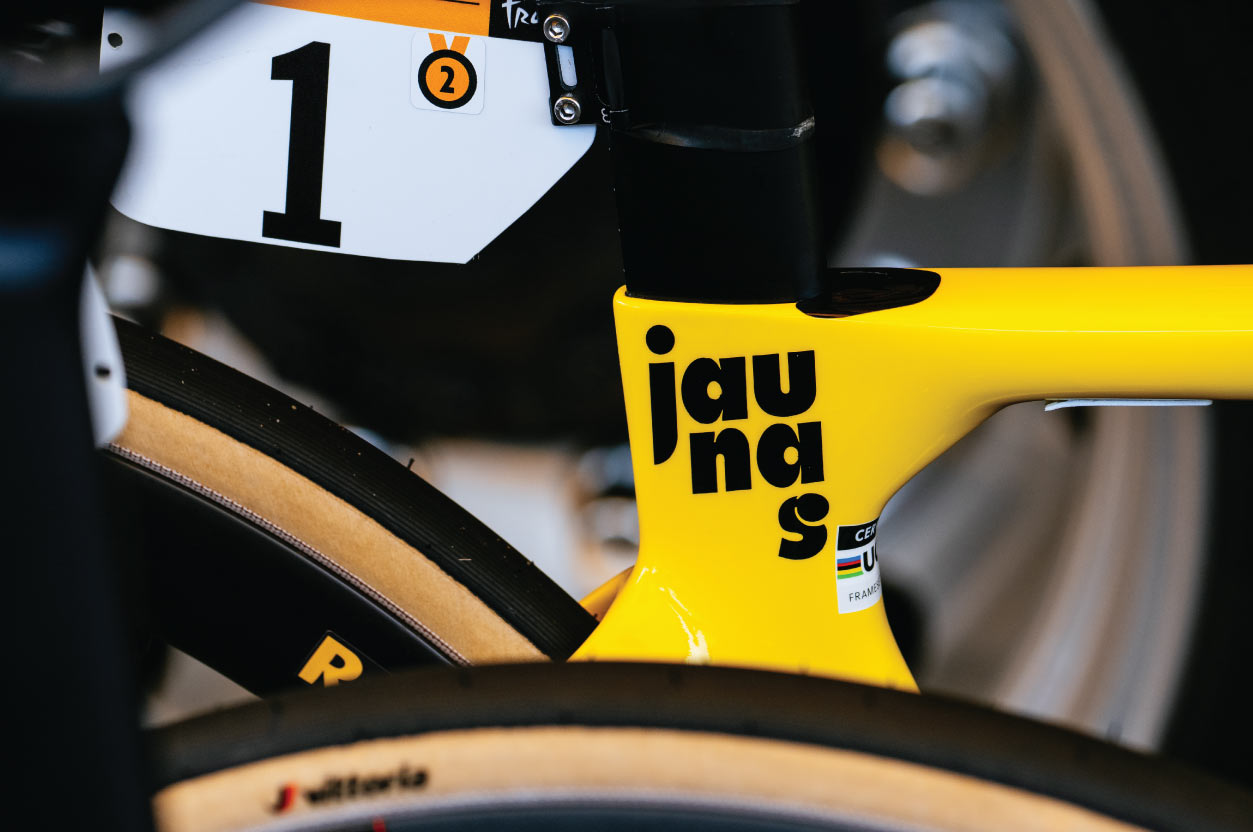
“The race of truth” as they’re often referred to, individual time trials are stages in which each rider races alone in a timed course. These stages are typically (though not always) on flatter parts of the course, requiring riders to ride all out for the entirety of the stage. The rider with the fastest time on the course is the stage winner. Many past tours have been won or lost in the ITT. Since there are no other riders to draft or teammates for protection, the ITT is where a GC rider’s individual power output is on display.
While the General Classification is the most coveted prize, the tour should not be viewed as a single race, but as many races within a race. With riders of all shapes, sizes, and talents competing. Every rider on a team arrives to France with a specific role and a set of goals. Here is what’s up for grabs and who’ll be chasing it:
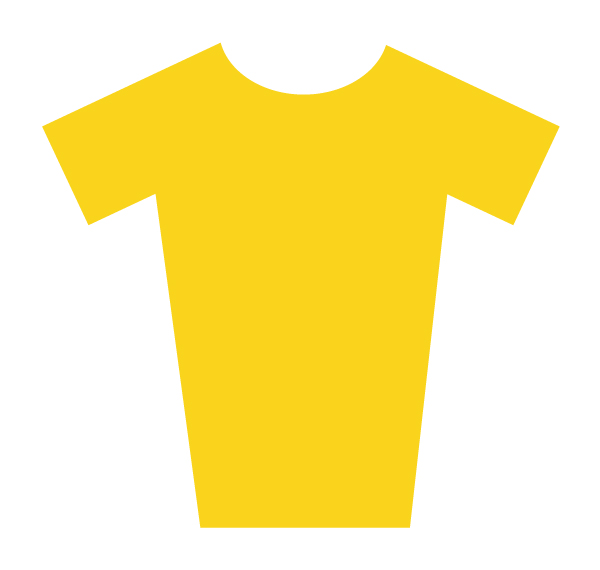
Often referred to by commentators as the “maillot jaune” (French for “yellow jersey”) the yellow Jersey is the most recognizable and sought-after prize in professional road cycling. It is worn during the race by the current leader of the General Classification (“GC”). As GC standings change early on in The Tour, the yellow jersey often changes hands, with many different riders wearing the yellow jersey throughout the three weeks of the Tour de France. While wearing the jersey for even a single day looks good on any rider's resume, the objective of any GC contender is to be the one wearing yellow standing on the podium in Paris at the end of The Tour.
Riders with a keen eye on winning the yellow jersey are typically skilled climbers, with the ability to hold their own in the Time Trial and flat stages, as it is on the climbs where the most time is typically gained or lost. These GC contenders arrive to The Tour with a team dedicated to helping them win the overall General Classification. These rider helpers, known as “domestiques” are the workhorses of road racers, with a singular goal of putting their team’s GC contender in the yellow Jersey. The domestiques tactically support the GC rider by defending them from “attacks” and keeping them in contention without tiring them out before the climbs. When a team’s rider wins the overall GC, it is usually celebrated as a team victory.

The green jersey is worn by the leader in points classification. Often referred to as the “sprinter’s jersey”, it is worn throughout the race by the current leader in the points classification. These points are accumulated in two ways. They are awarded to the first 15 finishers at the end of each stage. Or, secondly, they can be earned by winning intermediate sprints, a series of “finish” lines placed throughout a stage that the sprinting specialists sprint for. The sprints in The Tour are a true showing of a rider’s explosive, raw power over short distances, with sprint speeds often exceeding 40mph (64+ kph).
For most sprinters, the yellow Jersey is simply unattainable. Exceeding in a short sprint typically requires more muscle mass, making these riders generally less suited for the extended mountain climbs of The Tour. True sprinters go into the tour hunting as many stage victories as possible, primarily with their eyes on taking home the green jersey.
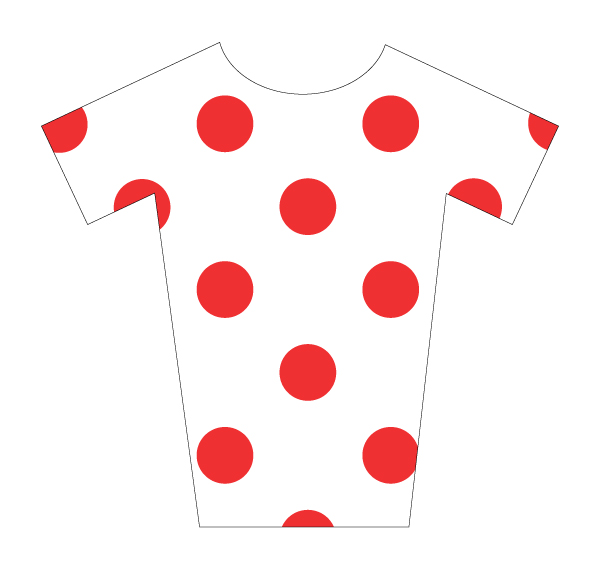
Known as the “King of the Mountains” (or “Queen of the Mountains”/QOM in the Tour de France Femmes) jersey, the polka dot jersey is worn by the most consistent climber. Like the green jersey, the first riders to reach the summit of a climb first are awarded points. During mountain stages, intermediate King of the Mountains (or KOM) lines are placed at the summit of each climb. Riders trying to win the polka dot jersey try to outclimb the others to gain maximum KOM points. The bigger the mountain, the more points are awarded.
It's easy to assume that any talented climber would pursue this jersey. However, that’s not the case. Most of the top climbers pursue the yellow jersey and do not waste their energy chasing the polka dot jersey. Typically the polka dot jersey is pursued by riders with little hope of taking home the yellow jersey. These riders often ride in breakaways (small groups of riders) that pull away from the peloton, in order to gain an advantage ahead of a large climb.
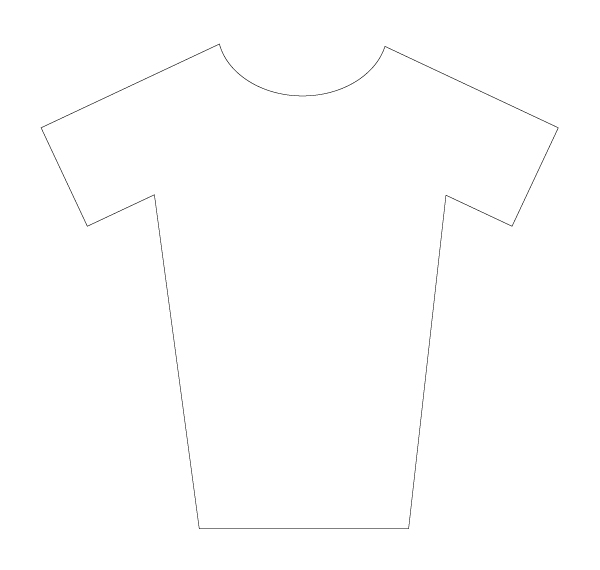
Known as the “best young rider” category, the white jersey is awarded to the highest-placed rider 25 years old or younger in the General Classification. The white jersey is a great way to get a glimpse of the up-and-coming talent in the pro peloton.
Any rider aged 25 years or younger. Any young rider in The Tour de France would be ecstatic to be wearing this jersey in Paris.
AAt the conclusion of each stage, a Tour de France jury awards a distinct red bib number to the rider who showed the most courage, put in the most attacks and made the biggest effort. After the final stage of the tour, an overall winner is also chosen by the same jury.
Since this award is subjective, it is not to typically be pursued intentionally. Often times, it is unknowingly won by riders who spend a lot of time working in the breakaway in pursuit of a stage victory.

AAt the conclusion of each stage, the team classification is awarded to the best overall team. This is determined by adding up the times of the top three riders of each team at the end of each stage. The team with its top three riders containing the best cumulative time is awarded a yellow bib number. Like all the other awards, after the final stage of the tour, the best overall team is awarded.
Teams usually don’t head into the tour with the sole goal of winning the team classification and instead win it en route to achieving other team goals. However, it’s not unheard of for teams within striking distance, heading into the final stages of the tour, to change their strategy in order to win it.
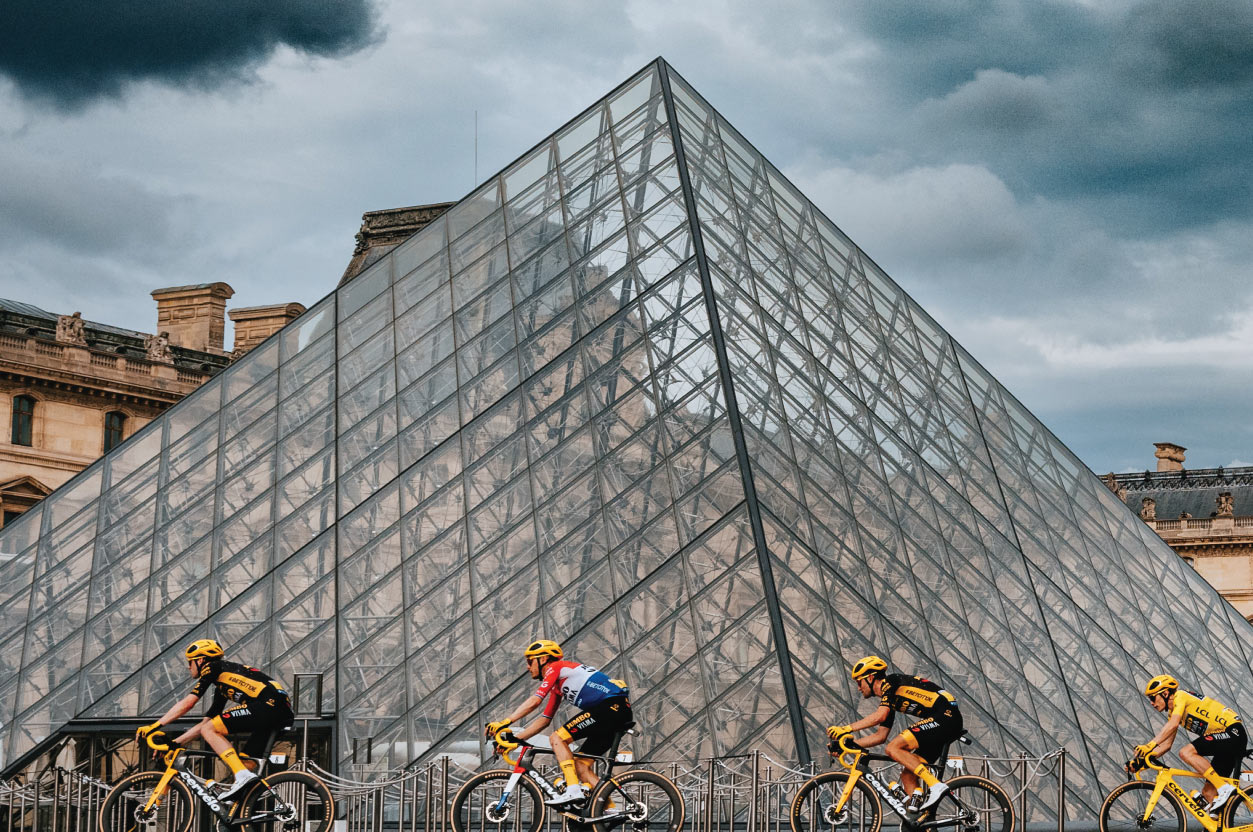
For many GC riders, achieving a spot on the final podium in Paris would be the highlight of their racing career. While they may not be awarded the hallowed yellow jersey, a spot on the final podium is without a doubt one of the biggest accomplishments in cycling.
Any rider arriving to the Tour de France with their sights set on a GC win has their sights set on the podium in Paris.
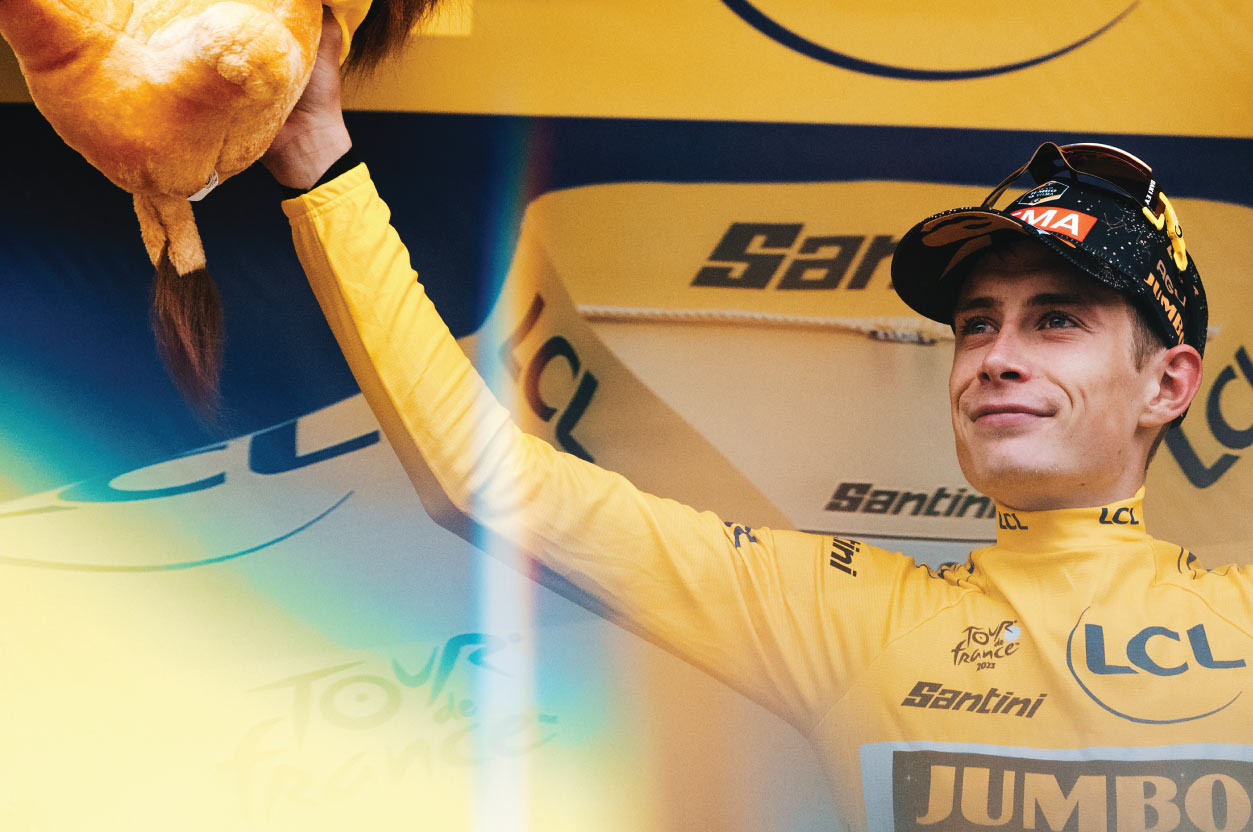
A stage win in The Tour de France is prestigious enough that it is the highlight of most pro riders’ careers. Many riders come to the tour targeting a single stage which may perfectly match their talents. For sprinters, racking up stage wins is all a part of their game, so much so that multiple stage wins is often seen as a bigger achievement than winning the green jersey.
Virtually all riders starting the Tour de France.
SHOP NOW
SHIP ALMOST ANYTHING & SAVE
SHOP NOW
SHOP NOW
SHOP NOW





Follow Jensonusa